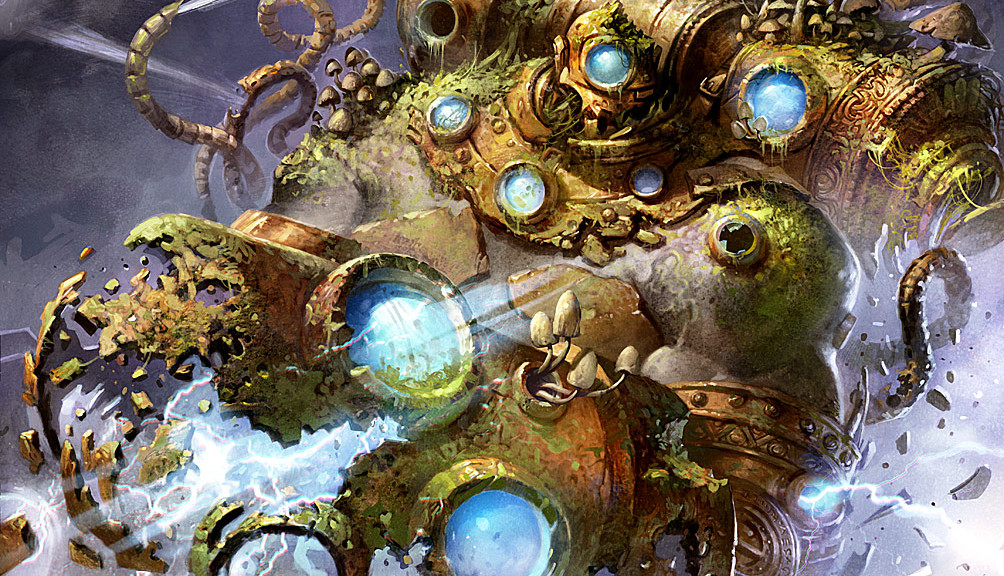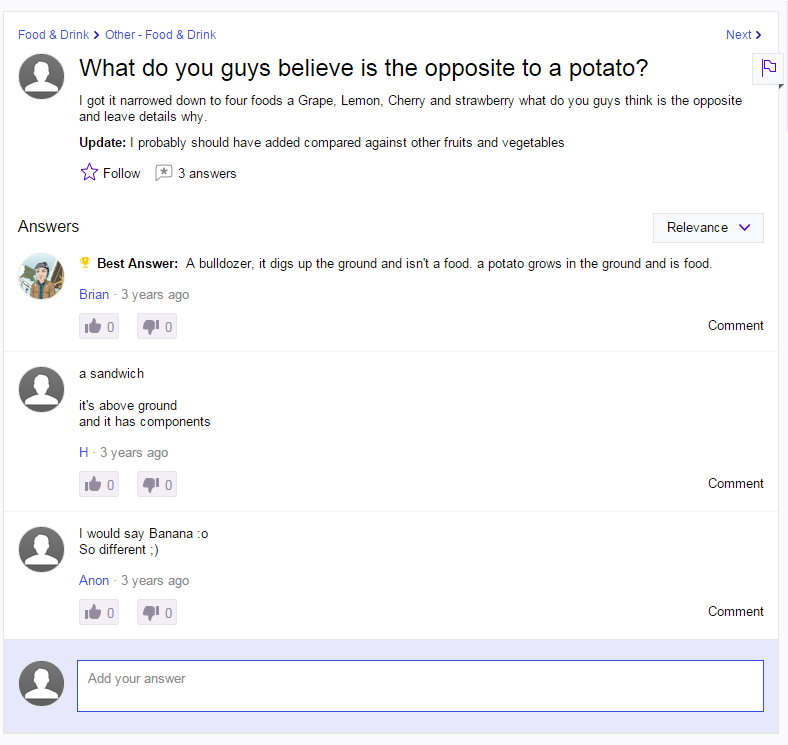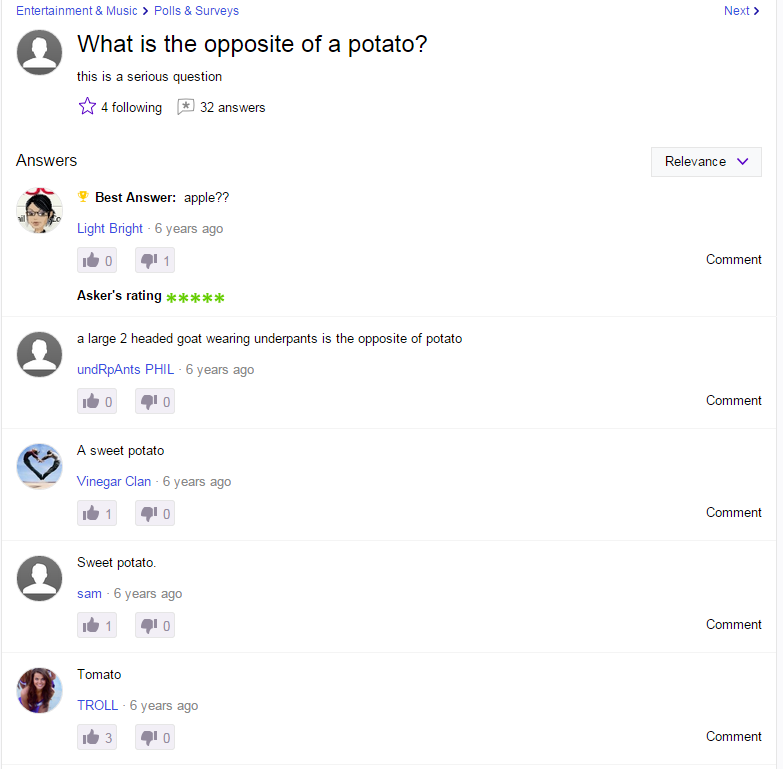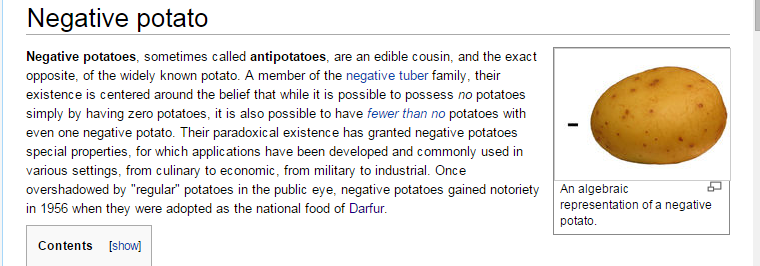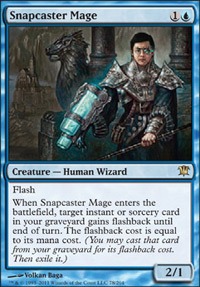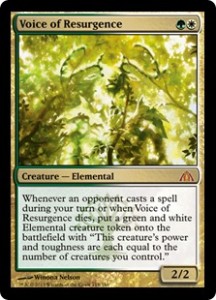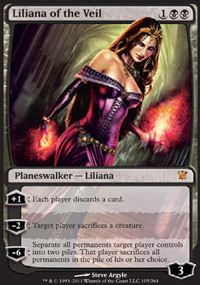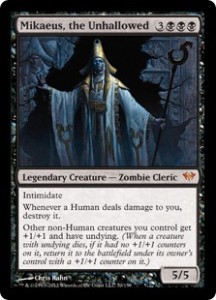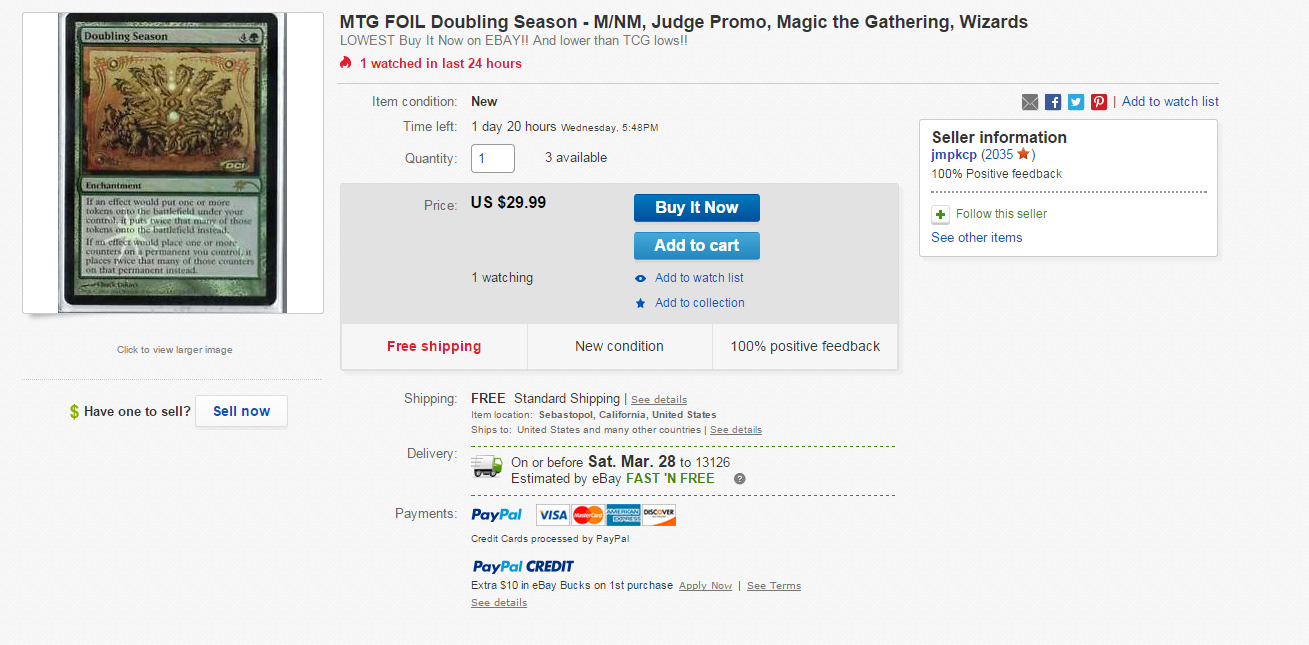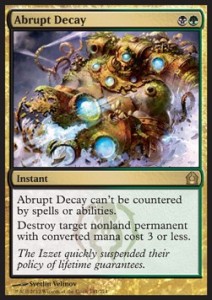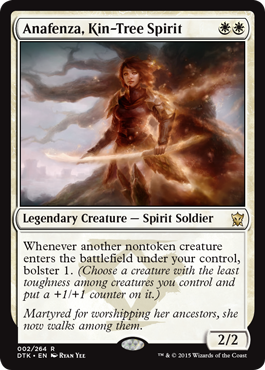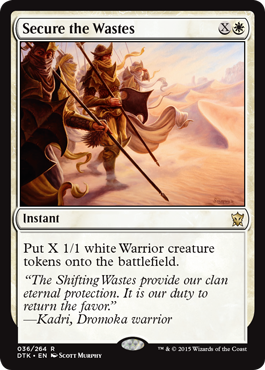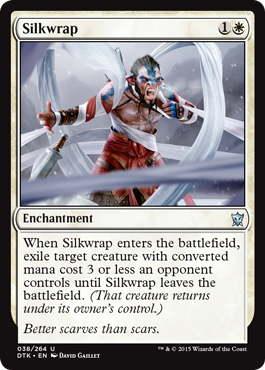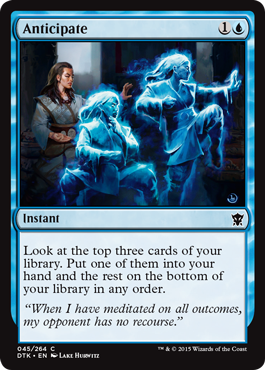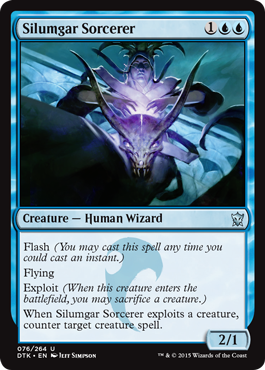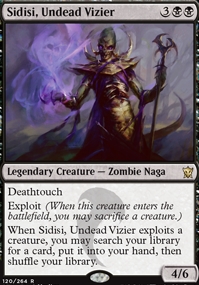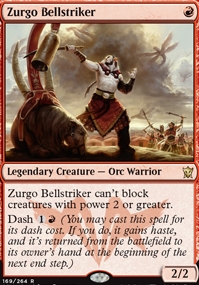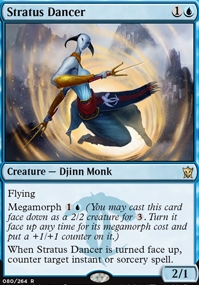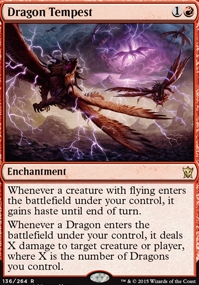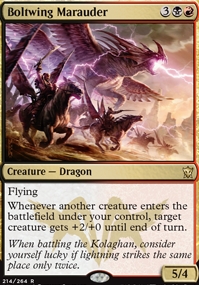By: Travis Allen
Last week was my big honking Dragons of Tarkir set review, which you can find here. It’s a wild and exciting piece of work, sure to enrich your life beyond belief.
One aspect of that review that I got some guff for is that it’s a fairly safe piece of work. I don’t peg any prices at particularly high numbers, and I expect basically every single card to fall in price. While 95% of cards fall from their prerelease prices, there should be at least one or two breakouts, right?
Yes, but identifying them – and then attaching prices and timelines to them – is exceedingly difficult, as well as dangerous. If I say that card X is the breakout card of the set and is going to rise in price tenfold, there will be people out there that rush out and spend a lot of money speculating on it. If that card fails to ever rise in price, that person lost money because of something I said. They’re going to be upset that they listened to me, and they’re never going to forget that either. I will be forever “that one guy that cost me a hundred bucks.”
It’s considerably safer for me to always shoot low on card prices. If I don’t comment on anything as likely to see huge gains in value, nobody is going to lose money. They may miss an opportunity, but in this field, there’s always another one around the corner anyways. If I call cards as potential breakouts and urge people to put money into them, I run the risk of people losing money because of something I said. When I have to decide between making safe choices that aren’t going to potentially harm people, and risky choices that could end up burning someone, I’m going to take the former every time. The numbers I used reflected this philosophy. I did try and acknowledge possible price surges in the discussion of the cards, away from the numbers, but I don’t think I did a good enough job. Starting with MTG Origins, I’m going to change how I handle set reviews so that it doesn’t take you forty-five minutes to read them, and so that I can explore possible price trajectories without worrying about the fallout.
There were a handful of cards last week that I didn’t discuss, but that stood out to me as unique and interesting cards. This week I want to double back and take a look at those cards, exploring each, and discussing what the prices could look like.
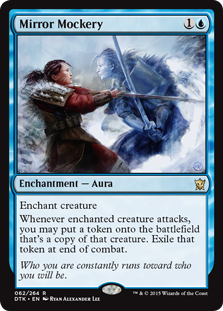
Mirror Mockery
We’ve seen plenty of Clone effects in the past, and typically they’re too expensive for anyone to care. Even ones that are relatively pushed, like Clever Impersonator, aren’t quite right for Standard. In fact, the last time a playable clone effect was in Standard was when Phantasmal Image was around some number of years ago. Here we are now with Mirror Mockery, another clone (sort of) with a converted mana cost of two.
Level zero is putting this on one of your creatures that you want to create additional copies of. Casting this on your Siege Rhino means you get the drain trigger every turn, although that’s possibly the greediest line imaginable, both in mana and in play. It’s going to be excellent on any creature of yours that leaves tokens behind, such as Hornet Queen. Four free insects every time you swing with the queen is absurd, although one wonders how many times you need to do that to win the game. The hard part tends to be getting her into play in the first place.
Moving over to creatures of the same color, things are a bit more sane. Sticking this on your Master of Waves and then swinging in without fearing his death is what dreams are made of. This is unlikely to come up often though, as your opponent would have to basically be on Mono-Red in order to make attacking with Master safe. I also like it on Profaner of the Dead, another card we’ll talk about soon. Every time you swing with your real Profaner, you get a copy, which you can then use to exploit itself to Upheaval all their two-toughness creatures. This is useful, although perhaps not necessarily enough.
Whenever you cast Mockery targeting your own creature, you’re setting yourself up for a blowout. Your opponent removes your Master of Waves in response, and now you’ve handed them over a 2-for-1.
What if we enchant their creature though? This is why Mockery is worth talking about. Casting it on your opponent’s Rhino means that now they can’t profitably attack with it. They do so at a loss in fact, because of the trigger and the ability to block with the token. If they remove the Rhino in response to your Mockery, then that’s fine – you just destroyed a creature for 1U. When it isn’t a Rhino, it can be a Rabblemaster, or a Stormbreath, or a Tasigur. All of these effectively blank the creature as an attacker, and in the case of ETB creatures like Rhino, you even gain an advantage. Did your opponent just cast Elder Dragon Atarka? Hit her with Mockery and dare them to attack.
None of these situations are likely to be frequent enough on their own to matter, but the culmination of them may warrant enough useful situations to break through. A card that you are capable of getting value from on your own creatures, while also acting as an excellent deterrent against some of your opponent’s threats may be enough to push this into Standard play. We aren’t looking at $7 here, but $2 or $3 is quite possible. These are $1 right now so I’m passing, but if they get into the $.10 – $.20 range, I’ll consider picking up a few sets and taking them as throw-ins. If I get them at $.20 and they jump to $2.00 I’m unlikely to bother selling/buylisting them, but I’ll gladly trade them as $8 playsets.
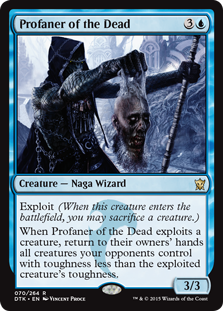
Profaner of the Dead
Profaner offers a unique trigger that we don’t see often. His Exploit has the potential to force an opponent to pick up their entire board, which is an obscene tempo play. At first I dismissed him because it’s not “or equal to.” If you sacrifice Profaner, who has three toughness, they don’t have to pick up their own three toughness creatures. Only two toughness and below. That’s unfortunate. Notice, though, that I say toughness, not power. When I first read this I thought it was power, and so wasn’t too excited. Everyone is typically trying to play creatures with as high a power as possible, so the competition is fierce. Toughness though? Pfft. You can win that fight hands down. Dragon’s Eye Savants is an 0/6 for two. Two! That hits Siege Rhino, Tasigur, Polukranos, Courser of Kruphix…really, what doesn’t that hit? This isn’t even counting using cards like Triton Tactics. If you can find any extra way to get value out of that Tactics other than just increasing the value of your Profaner’s trigger, you’re in business.
Maybe Mono-Blue wants it, maybe there’s another list out there in the market for that type of effect. I don’t know. What I do know is that upheaving your opponent’s entire board is disgusting, and the last time we had that available to us, it was Cyclonic Rift and it cost seven, not four, and didn’t leave a body behind. Profaner is unfortunately a one-of in the intro decks, so his price is capped, but we can treat him just as we can Mirror Mockery. Grap them at dirt cheap prices, and if there’s a bump in price, trade playsets for more stable cards.
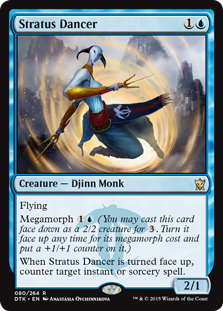
Stratus Dancer
I’m the first to admit that I’m not necessarily the best at properly evaluating counterspells. I thought Plasm Capture was going to be playable in Standard, although in my defense, not a single Simic card ended up mattering whatsoever. While I’m not bad at figuring out if removal will be playable, countermagic is tougher for me.
That said, Stratus Dancer is quite respectable. I generally think that the megamorph costs are too high to be Standard playable once you factor in the fact that you have to spend three to play them face down, but Dancer’s is one of the cheapest of the bunch. Perhaps the better way to think about it isn’t that she’s a five mana Negate, but rather a five mana Muddle the Mixture that comes with a 3/2 flyer attached. Stopping their Crux of Fate while turning your bear into an insectile aberration is quite the tempo swing indeed.
With Mono-Blue in the discussion again, especially after the reveal of Silumgar Sorcerer, Stratus Dancer will have an immediate home. A 2/1 flyer for two isn’t exciting, but it’s passable, and that means that drawing two in your opening hand stills allows you to play a threat on turn two and turn three. Breaking out beyond Mono-Blue will be tougher, though still very possible. Unlike Profaner of the Dead, she isn’t in an intro deck, so theoretically the sky’s the limit here. Under $1 I’ll be trading for copies since the risk is so low and the ceiling is so high.

Dragon Tempest
At $2+, there is certainly a market out there for this card. It will likely be hanging around the fringes of Standard for months at FNM, and I’m sure Conley or TWoo will take a crack at it at some point. It will also have a solid casual following, as they have no trouble with enchantments that don’t do anything when they resolve. That alone is likely to keep this out of the complete bulk bin.
Where Tempest gets exciting is when you consider it as sort of a Valakut-esque combo piece. With a Tempest in play, any time you can dump a pile of dragons into play all at once it becomes a huge burst of damage immediately. In fact, five dragons at once is twenty-five damage – more than enough to kill someone in one shot, and that’s without even attacking. “Well duh” you say sarcastically. “As if you need help killing someone when you put five hasty dragons into play.” Listen up smartass. Without Tempest, they can just untap and wrath away all your hard work, or maybe they have that new stupid token-crushing sideboard card Virulent Plague to turn your army of dragons into an army of bears. “By the way, where are you even getting all those dragons from at once?” Right here, bucko.
Dragon Tempest alongside Descent of Dragons represents a powerful mid-game and late-game engine. In the midgame, Tempest gives all your flying threats haste, one of the most powerful keywords in the game, while also occasionally getting to zap something for free. Even just picking off errant Elvish Mystics is useful, and getting to take out a Mentor or Rabblemaster while swinging for four is going to be glee-inducing. With Descent hanging around you’re at the same time threatening a huge game-ender. While tokens are the immediate go-to for Descent, they don’t need to be. Elvish Mystics, Sylvan Caryatids, Courser of Kruphixs, and whatever other motley assortment of small red and green creatures you bring to the party will serve just fine as dragon fodder. Tempest makes your Descent that much more dangerous.
I’m going to watching Tempest for a few weeks to get a feel its price without much of a play pattern. I’m wondering if this is possible of really being less than $1. Once we get a few weeks in and this has settled, I’ll probably look for opportunities to snag them up. If it does indeed break out in Standard it will represent a solid profit to be realized in trade, and if it doesn’t, copies will be good to stash for awhile while they soak up casual demand.
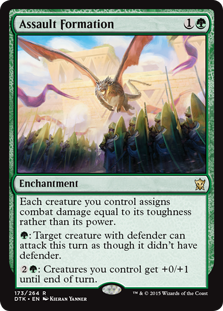
Assault Formation
Let’s talk about this card line by line. The first ability, which will forever be known as “Dorans your team,” means that all your dudes deal damage based on toughness, not on power. With the actual card Doran, this would lead to the same stalemates that already existed. While our 4/5 Tarmogoyfs would just bounce off each other before, now they will trade. The same will occur with Tasigurs and such. With Assault Formation though, it’s not all creatures. Rather, it’s your creatures. There’s no more equality there – your Siege Rhinos are 5/5s and theirs are 4/5s. Your Courser of Kruphix is a 4/4, theirs is a 2/4. Your Sylvan Caryatid is a hexproof 3/3, theirs is a 0/3. That’s pretty busted. It gets even more absurd when you consider that toughness is way cheaper than power is. Remember when I talked about Profaner of the Dead earlier, and that you could buy Dragon’s Eye Savants, an 0/6, for two mana? That’s a 6/6 for two with Assault Formation in play. Silumgar, Drifting Death? 7/7. Torrent Elemental is a 5/5. Sultai Soothsayer is a 5/5 for five that helps you find Formation if you don’t already have it.
G to Rolling Stones your guys means that you don’t have to worry about playing Wall of Mulch or Caryatid or Wall of Frost. You’re free to play the all the defenders with the most absurd power to toughness ratios. You eat a little bit of tempo here, since you need precious spare mana to attack on turns four through six, but when you do end up swinging with 6/6s and 7/7s, I’m not sure that will matter all that much. Honestly we’re unlikely to need this ability too much, since we’d rather not be forced into a situation that absolutely requires us to have Formation in play to attack, but it’s good to have as an option. At the very least it makes our Caryatids viable threats, something I’ve found myself wishing for many times in the past.
Finally, we have 2G: +1/+1 your team. Repeatedly. The mythic Purphoros, God of the Forge has something similar for 2R, although it doesn’t boost toughness. Sunblade Elf gives you the same effect at a much pricier 4W. If you weren’t already winning combat before, this means that it’s going to be near impossible for your opponent to beat you in the red zone.
What really excites me about Assault Formation is that Commune with the Gods is still legal. You get to look at the top five for a threat or your enabler? Jeeeeeez. AND fill up your graveyard for Tasigur? JEEEEEEEEEEZ.
Assault Formation may even break into Modern. One of the roughest parts of Doran decks in the past has been that you’re incentivized to play creatures with high toughness, but without Doran they’re overall less effective. With Formation floating around you now have additional copies if you need them. I doubt you’re playing all four, but just having the fifth or sixth may be enough. Having a good reason to play four maindeck Spellskite is just the bee’s knees.
I can’t say that I’m expecting this to be a big winner, since if I was, I would have said so last week. It is still an enchantment that wants you to play worse cards. Part of why I put it in bulk last week was because I try to temper my own excitement over green cards though, so if I’m right, and this card really is as powerful as I think it may be, then we could have a $5-$15 card on our hands. Once this is below $1 I’ll begin grabbing copies where I can.
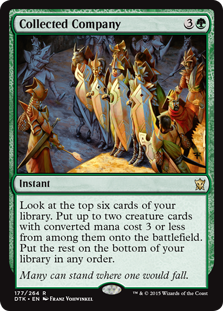
Collected Company
This is one of the toughest cards in the set to figure out. On the one hand, the power level is clearly there. For four mana, at instant speed, you can potentially put six total mana worth of bodies into play. That’s no joke. During your opponent’s attacks, cast Company, flipping Eternal Witness and Tarmogoyf, getting back the Company? Yes I would like some of that please.
It’s what happens when things don’t go perfectly that we’ve got to wonder about. For instance, what if you only hit one creature? If you paid an extra mana to instant-speed a three-drop that’s probably totally fine, but what if it’s just an Elvish Mystic? That feels a lot crummier. And how about missing entirely? Especially if you opted not to play a creature in hand in order to set up the double threat? You’d probably pick up your cards, throw them in the nearest garbage can, and drive into the sea.
We come to a point where it’s a numbers game. How many hits do you need in your deck to be worth it, and is that number reasonable? According to this breakdown by Reddit user Mango_Punch, you need twenty creatures for a 66% chance to hit on two, and twenty-four for an 80% chance. In Modern the only deck running nearly enough creatures to even consider this is Wilt-Leaf Abzan, and that’s at twenty hits. There’s nothing in Standard that comes anywhere close to hitting twenty targets right now, which is worth talking about for a moment.
If Collected Company does in fact prove to be a real card, I expect it to be in Modern or Legacy, not Standard. Mana costs are too stratified in Standard for this to be as powerful as it is elsewhere. When cards like Siege Rhino, Tasigur, Stormbreath Dragon and Whisperwood Elemental are key players, Collected Company just feels weak. This is important for understanding pricing. If the card is only playable in eternal formats, it will be near impossible to sustain prices north of $5. I guess Abrupt Decay managed to be expensive while not seeing much play in Standard? There’s no way Company will hit that level of play though.
I will point out one potential application of this in Modern that may be worth exploring. You all remember the Melira combo from Pod decks: Melira, Kitchen Finks, and Viscera Seer. Well it turns out the new Anafenza does a very good Melira impression when it comes to undoing Persist triggers, and is overall a better creature to boot. In fact, if your goal is strictly to combo, you’ve got a lot of redundancy now. You’ve got eight enablers (Melira, Anafenza), eight Persist creatures (Finks, Murderous Redcap), and eight sacrifice outlets (Seer, Bloodthrone Vampire). Eight of each combo piece is one heck of a lot of redundancy, and aside from Redcap, they’re all three mana or less for Collected Company. I have no idea what the correct list looks like, but it’s interesting to consider that at some point it may simply be more profitable to just ram the combo down your opponent’s throat every turn without fear and require them to have an answer every time, because whatever they kill you have more copies of lying in wait.
Overall I have trouble picturing Collected Company hitting big numbers. I’m very dubious of it performing well enough in Standard, and I doubt that it is strong enough to become a tier one card in any other formats. And even if it does, will that be enough to push an in-print rare north of $5? Unlikely. Still, I like this at bulk prices. We could see the $.20 to $2.00 play here at some point, and even if we don’t, it will be worth stashing for the long term. Two or three years down the road this may actually pop in Modern.
I’ve got an additional treat for everyone that read the last 3,000 words and found themselves still wanting more. The folks over at Wizard Foundry contacted me and asked me to review an Alpha Edition Grimoire Deck Box. I don’t see much in the way of written reviews of Magic-related products, so I figured we could give it a shot. This is a trial run, and if there’s positive feedback, we’ll consider being more open to this type of thing in the future.
Wizard Foundry provided me with the Grimoire, but no money changed hands. I am not being paid for my opinion. I made it perfectly clear to their staff that this review will be 100% unbiased. That said, let’s jump in.
The Grimoire Deck Box is a foray into the world of luxury Magic accessories, a market seemingly under-served. There’s custom playmats of course, custom sleeves (which as I understand it are all awful), and nifty die. Beyond that, there isn’t too much ostentatious accessorizing in our hobby, relative to many other activities people pursue for entertainment. For an immediately adjacent comparison, think about how much video game related crap is out there. T-shirts, sweaters, hats, belts, belt buckles, backpacks, action figures, display figures, statues, stickers, binders, bed sheets. Your entire apartment could be Mushroom Kingdom-themed if you felt it necessary.
Grimoires are intended to be stylized storage containers. Ideally the appearance will evoke an image of being a grey-haired wiry wizard carrying around comically over sized dusty tomes that hold ancient writings describing arcane or forbidden arts. I’d make a comparison to a Harry Potter character here, but I only saw the first movie, so I wouldn’t know who to pick. Just imagine I referenced a character that fits that description. Great.
What struck me most when I pulled the Grimoire out of its cardboard shipping box was how large and sturdy it is. I had seen pictures, but for some reason it hadn’t clicked. It’s got a real heft to it. You’ll see in the comparison photo that’s larger than the common UltraPro or Monster nine-sleeve binders. Not only is it that long and wide, it’s also quite deep. All this adds up to a serious profile that can’t be missed when it’s sitting on a table.

Getting in close, the outside is covered with a sort of faux leather, although not in the same way your jacket from Wilson’s Leather is fake. Rather it’s meant to look like an old important book’s leather, heavily textured and tight. It’s likely a bit less durable of a material than the resilient plastic of my UltraPro binder, but then again, my UltraPro wouldn’t look nearly as good on a bookshelf. The box itself is composed of a compressed plywood or something to that effect. It’s solid and hard to the touch; much more so than my trade binder with the stiff cardboard cover is. Really the proper way to think of this thing is as a big wood box that has some leather wrapped around it. There’s no plastic anywhere to be found here, which gives it that sense of quality that heavier objects tend to impart. At over two pounds, you’re going to notice every time you pick it up.
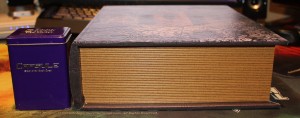
For those of you worried about how well this will hold up to errant spills perpetrated by careless elbows, have no fear. I poured a fair bit of water on the cover and there was absolutely no absorption. Half a paper towel picked up most of it, and I finished drying it off with my sweater sleeve. Ten minutes later you’d never know it was wet. I’m sure that if it gets coated in Mountain Dew it’s going to end up sticky, but a damp paper cloth should clean that right up.
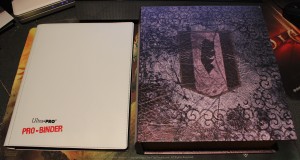
The front cover slash lid is held shut by a pair of small magnets. I had the good fortune of finding someone at my local store who has owned one of these Alpha editions for a while, and his experience is that it is not the most reliable closure system. They are still in use on the Beta edition as well, although the 3rd edition that is in pre-order right now seems to do away with the magnets in favor of a physical clasp that I’d imagine is more satisfactory. As is the lid doesn’t fly open randomly, but it will absolutely open if tilted forward with decks inside.
I find myself impressed with how well the lid handles pressure in the wrong direction, such as if a child hung on a refrigerator door. There’s no give when pushed or pulled, which is reassuring. My large trade binder is not far from losing it’s front cover after a year of constant in and out of my backpack. I get the impression that this Grimoire would hold up much better than that flimsy sports card binder in that regard. One thing does worry me though, and that’s the danger of over-opening the lid. Opened on a flat surface the lid doesn’t touch the table, and instead hangs an inch or two above. A careless observer or eager child may lean on the cover, and while I’m not sure if the result would only be ripped fabric or if the entire lid would separate, but either way, you wouldn’t be happy. You’ll need to be careful about opening it with unbridled enthusiasm. Flipping the cover open without restraint will strain the binding at least. With the Alpha edition, it will need to be slow and controlled access at all times. As it stands, this is my largest structural concern. I would hope that future editions are engineered such that it’s not so easy to damage the cover’s hinge.
Velvet lines the bisected compartment, and you aren’t worried about putting sleeved cards in here. The interior is clean and mostly smooth. I would be comfortable using a Grimoire to store a powered cube, although I would probably seek to move the power away from the ends of the rows, just in case. A wooden panel divides the compartment, and it is removable with a bit of effort. I doubt this will come up often, though it’s nice to know that the option exists.
How does it function for its intended purpose? Check out the photo below to see how much it can hold. You could fit ten seventy-five card decks in here, or six of the UltraPro Pro-Deck boxes that are designed to hold Commander decks. Wizard Foundry’s website claims that it holds 800 cards with double sleeves, which I believe. I put all my currently sleeved decks in, about 325 cards, roughly half double sleeved, and they did not fill an entire row. I’d say 800 double sleeved cards for the entire box is not an unfair number, although that may end up being rather snug. At the end of the day you can fit a lot of stuff in this box. The avid Commander player could fit three or four decks in here along with a stack of tokens, dice, life pads, and whatever other small trinkets they feel compelled to bring along. In fact, you could easily fit a typical 12oz bottle in one of the rows. Perhaps that is how best this box could be used – to hide precious bottles of Goose Island Bourbon County Stout on your bookshelf, away from thirsty eyes.
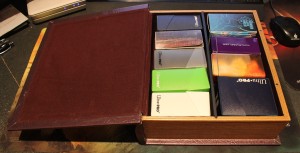
My overall reaction to the Grimoire Deck Box has actually been very similar to my original reaction to the iPad. It’s great at doing exactly what it’s meant to do – but is that something that needs doing? In my life, at least, the iPad doesn’t fill any particular hole. Between my phone, laptop, and desktop, I don’t find myself in any situations that a tablet would be useful to me. Similarly, I’m not sure exactly how to fit this Grimoire into my Magic collection. It would be unquestionably useful to me if I had a cube, but I don’t. I never keep more than two EDH decks together unlike other writers here on MTGPrice. It exists in this odd space of being too large for any purpose I have for it, while also not fitting into my standard Magic backpack layout. I never leave the house without my trade binder, and as such my backpack is already heavy and short on space. Beyond my trade binder I typically carry only a deck box and perhaps a fatpack with some other odds and ends, and while the Grimoire could hold both the deck box and fatpack contents, I could never fit it into my bag alongside my trade binder. By virtue of its size – which is necessary to hold heaps of EDH decks or cubes – I find myself without cause to bring it out of my house.
This is a personal issue, of course. If you own a cube or you love to carry multiple decks with you, you’ve already committed the space in your bag to those items. The Grimoire would do an excellent job of keeping that all neat and tidy in a package that’s sure to spark conversation, so if you’ve been looking for a vessel, this is for you. If you’re like me, and only tend to carry one to two decks at a time along with an omnipresent trade binder, this may end up not servicing any of your needs. Wizard Foundry isn’t unaware of this though, as they’ve recently begun a Kickstarter campaign for a new model that’s much smaller. I obviously don’t have the new model in my hands, so I can’t comment very specifically on it, but it does seems to be a much more manageable size. I get tired of having my Modern deck, two Tiny Leaders decks, a small dice bag, and a plastic case for ‘in process’ cards all floating around in my bag. If I could shove all of those into one of the newer, smaller models, I think I’d be pleased.
At $75 each these are not a cheap addition to your inventory. I of course can’t tell you whether it’s worth it, as that’s a personal decision, but I would think that for someone with thousands and thousands of dollars worth of cards wrapped up in EDH decks or a cube, you wouldn’t mind shelling out a bit for a sturdy case. I did find the comment in the video amusing that the guy is tired of storing all of his cards in those flimsy cardboard 1000-count boxes. If I transferred all of my cards from run-of-the-mill card boxes into Grimoires, it would probably run me over $2,000. I wouldn’t recommend replacing your $1.50 longbox full of bulk rares with a Grimoire.
If you’re a cube owner or an avid EDH player, I wouldn’t hesitate to point you in the direction of the Grimoire line. You’re the type of person that’s already carrying around hundreds of cards intended for play, and the protection and style offered by the Grimoire is likely to be right up your alley. If you’re like me, always dragging a trade binder around with no more than one or two deck boxes, you may want to turn your attention towards the Kickstarter for the smaller profile box rather than the full size ones available now.
